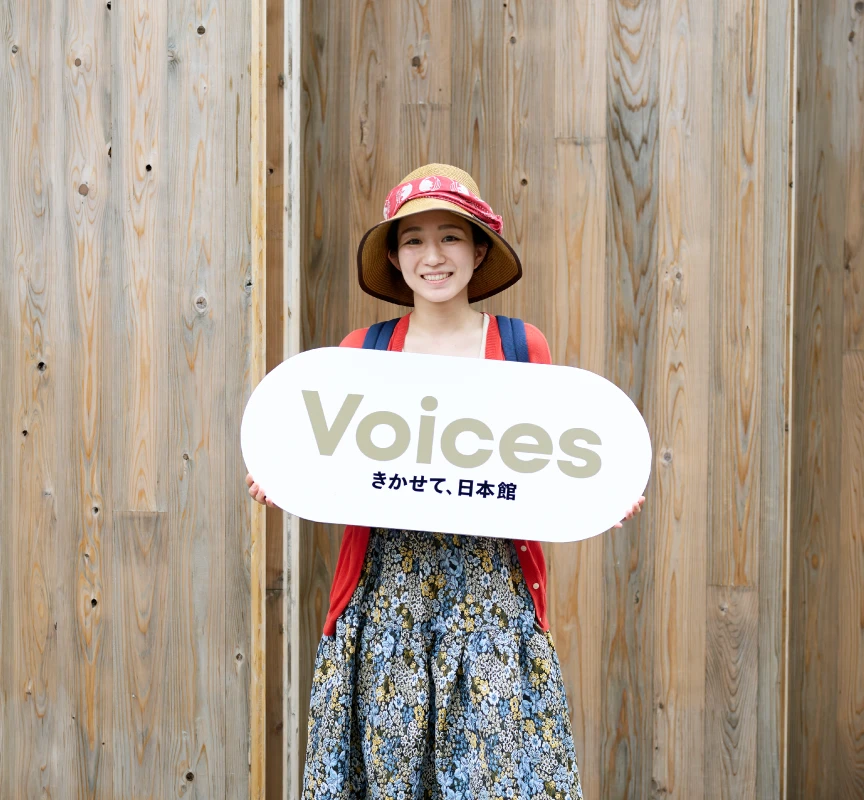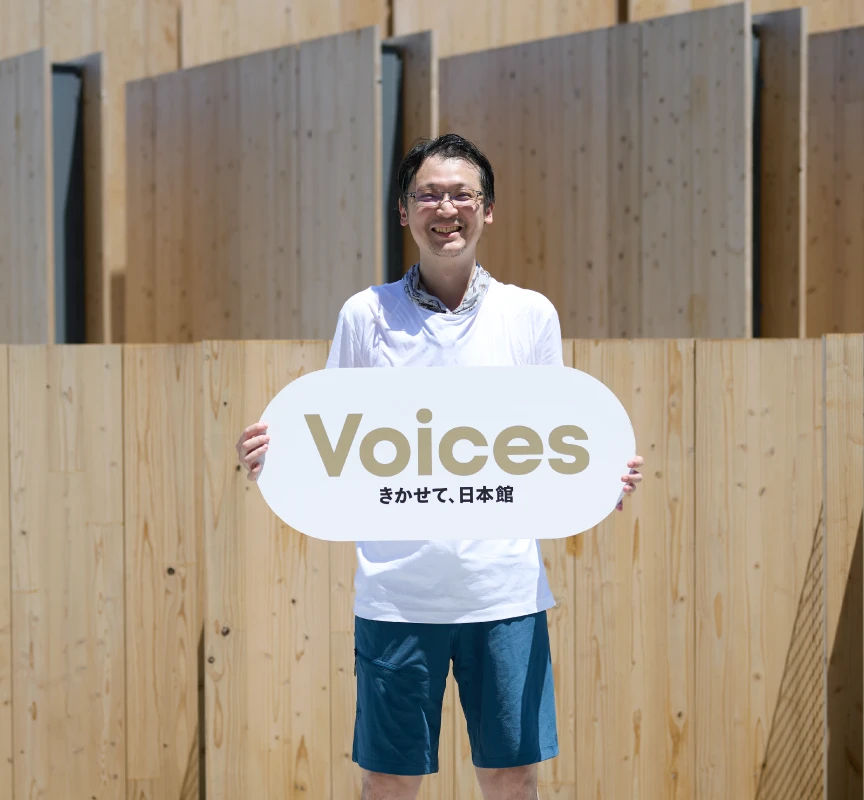- Locale
- ja
- en
Feature
Voices [Part 2]
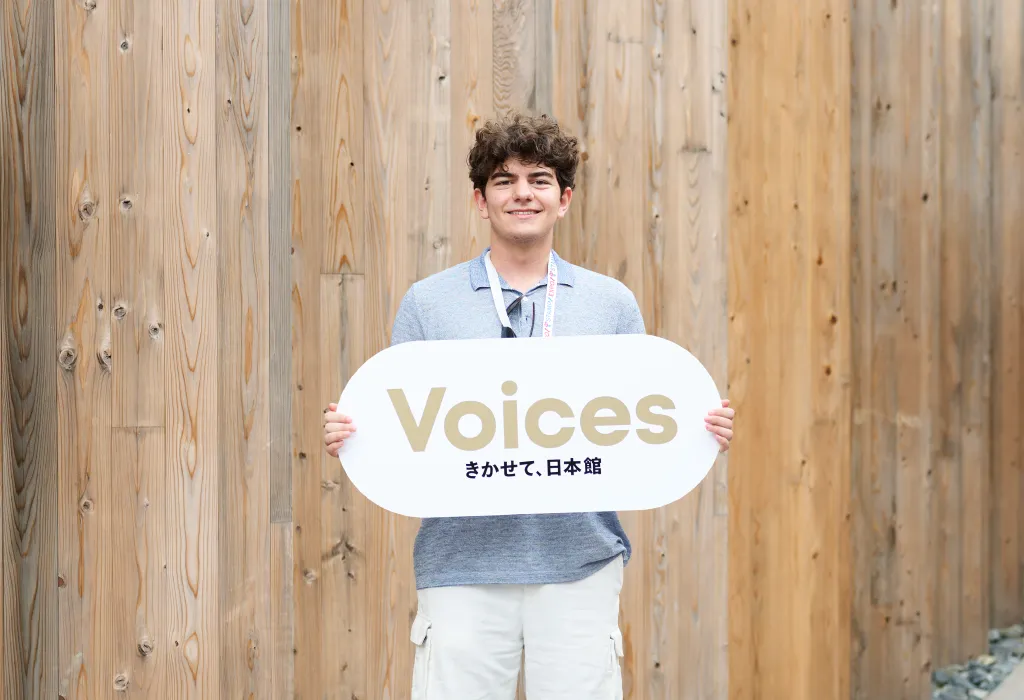
Index
Life itself is a cycle / Nick (17, Student)
Excited by the cute koji mold / Reina (35, Office worker)
A one hour and twenty-minute trip / Satocho (63, Organization officer)
“Make soft” never crossed my mind / Naoki (29, Engineer)
Passing on culinary traditions to the next generation / Chako (50, Medical clerical worker)
My impression changed completely / Kazunoko (12, 1st year junior high school student)
A relaxing pavilion / Phil (44, Sustainability)
An emotional three hours / Kana (46, Homemaker)
How was the Japan Pavilion? What new discoveries were there? We asked visitors to share what they thought and experienced. Let their voices be a guide as you explore the pavilion—and a chance to notice the cycles happening all around you.
Life itself is a cycle / Nick (17, Student)
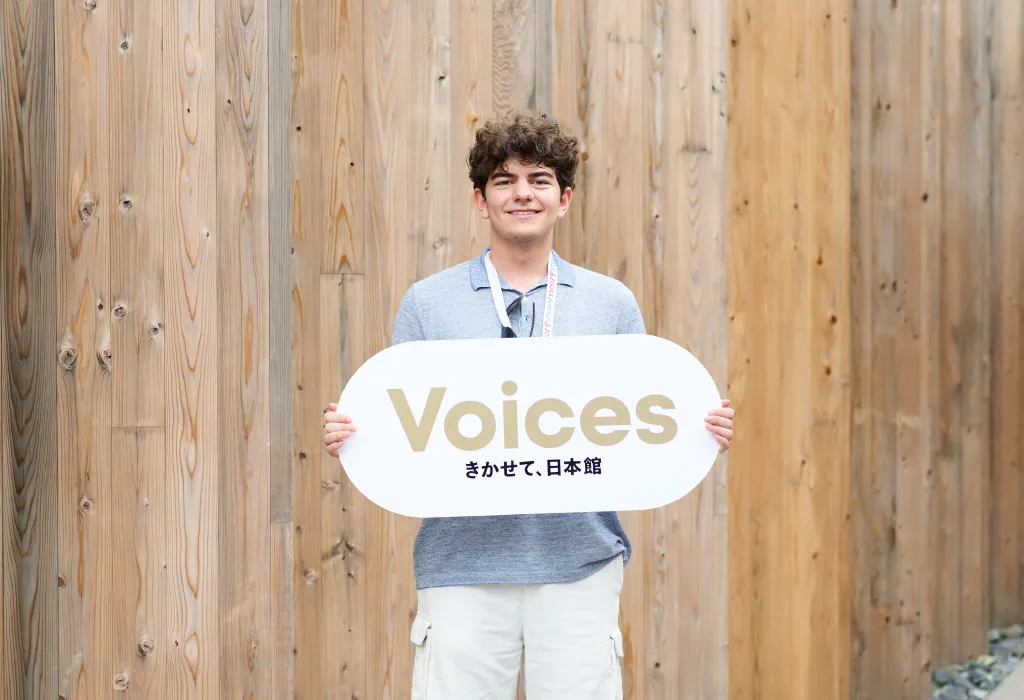
What was your favorite exhibit at the Japan Pavilion?

Nick
I think my favorite was the Farm Area. The algae curtains were great. It was really cool to see the algae displayed in a way that we could see it.
What was something you learned at the pavilion?

Nick
I didn’t know much about algae before visiting the Japan Pavilion. So, I was surprised when the exhibition compared it to other plants and foods. And I’m glad I was able to see the algae growing in the aquarium. It gave me a new perspective.
Can you think of a cycle in your everyday life?

Nick
I think life itself is a cycle. Every part of daily life repeats itself. Even small things make up cycles. For example, breakfast, lunch, and dinner, or waking up and falling asleep at the same time every day. Those are cycles to me.
Excited by the cute koji mold / Reina (35, Office worker)
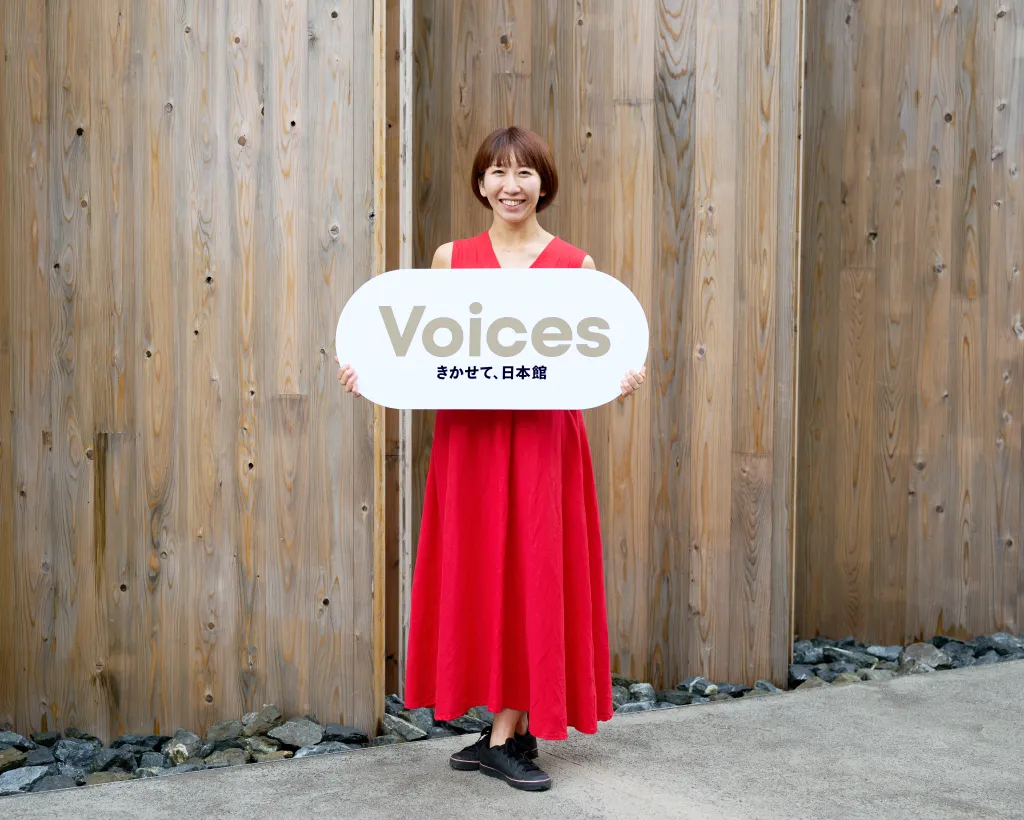
What was your favorite exhibit at the Japan Pavilion?

Reina
The exhibition where the koji mold was displayed in the form of various sculptures was my favorite. That was really cute. I was excited to see koji mold shown like that.
What was something you learned at the pavilion?

Reina
I learned that food waste from the Expo is collected and converted into energy. Instead of throwing it away like we might normally do, this is one effort to reuse it. I sat on a stool in the Japan Pavilion, and I realized that the stool itself was actually another case of transformation. Realizing things like that was really interesting.
Can you think of a cycle in your everyday life?

Reina
One example, I think, is how a wide variety of cultures circulate in various places. At this Expo, I saw pavilions from countries I’ve never visited before, and they showed me a side of those countries I didn’t know about. I think it’s the same for people coming from overseas, seeing the Japan Pavilion and learning about Japan. Japan has its good parts and bad parts, but I hope people like Japan when they visit.
A one hour and twenty-minute trip / Satocho (63, Organization officer)
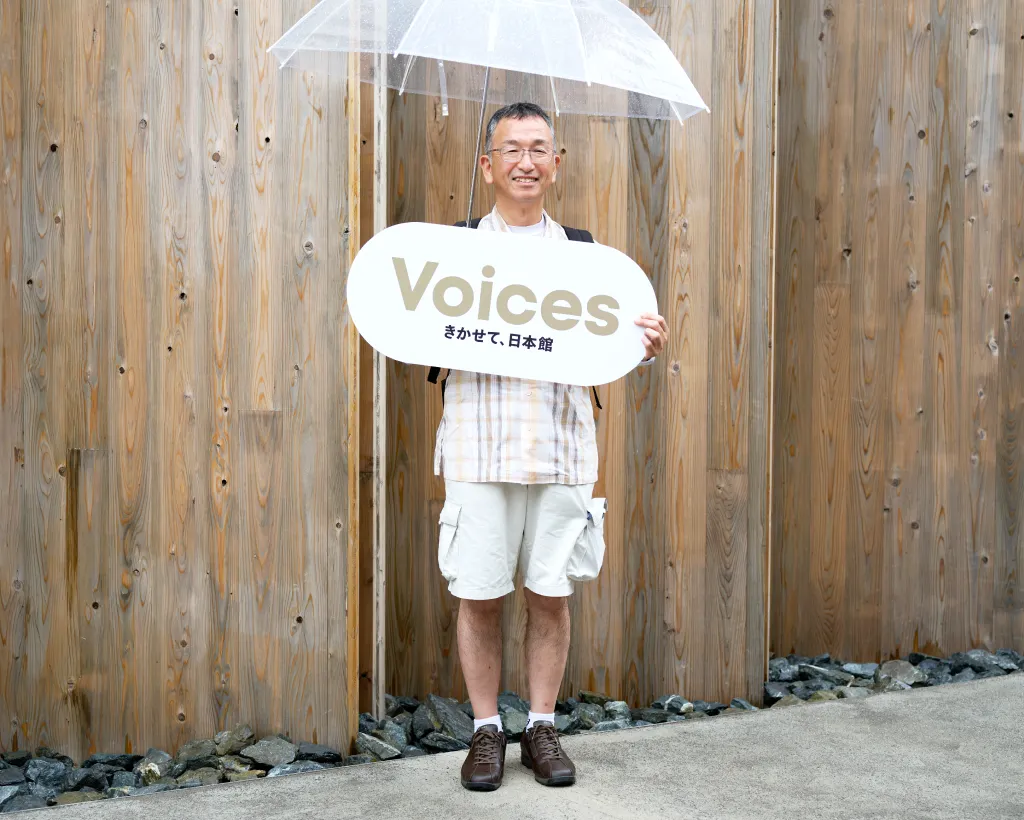
What was your favorite exhibit at the Japan Pavilion?
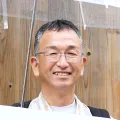
Satocho
Every exhibit was great. They all exceeded my expectations. I listened to all the audio guides, and I also read all the exhibit explanations. Every exhibit had me saying, “Wow!” I was enthralled, so I ended up at the Japan Pavilion for an hour and twenty minutes.
What was something you learned at the pavilion?

Satocho
I was surprised by the way Hello Kitty was used. The Pavilion used the cuteness of Hello Kitty while still capturing the academic aspects like the shapes of algae. Each is unique; marimo is different from wakame seaweed, for example. It was really well done. And it was great that the quality was so good throughout. I was surprised by how good the sculptures showing the genetic characteristics of koji mold were as well.
Can you think of a cycle in your everyday life?

Satocho
One that’s part of my everyday life is corporate organization. When a new person joins, you teach them what you were taught. What we do may change with the times, but the fundamentals stay the same. They say that people learn from their mistakes. That’s a cycle, too, in the sense that failure leads to success.
“Make soft” never crossed my mind / Naoki (29, Engineer)
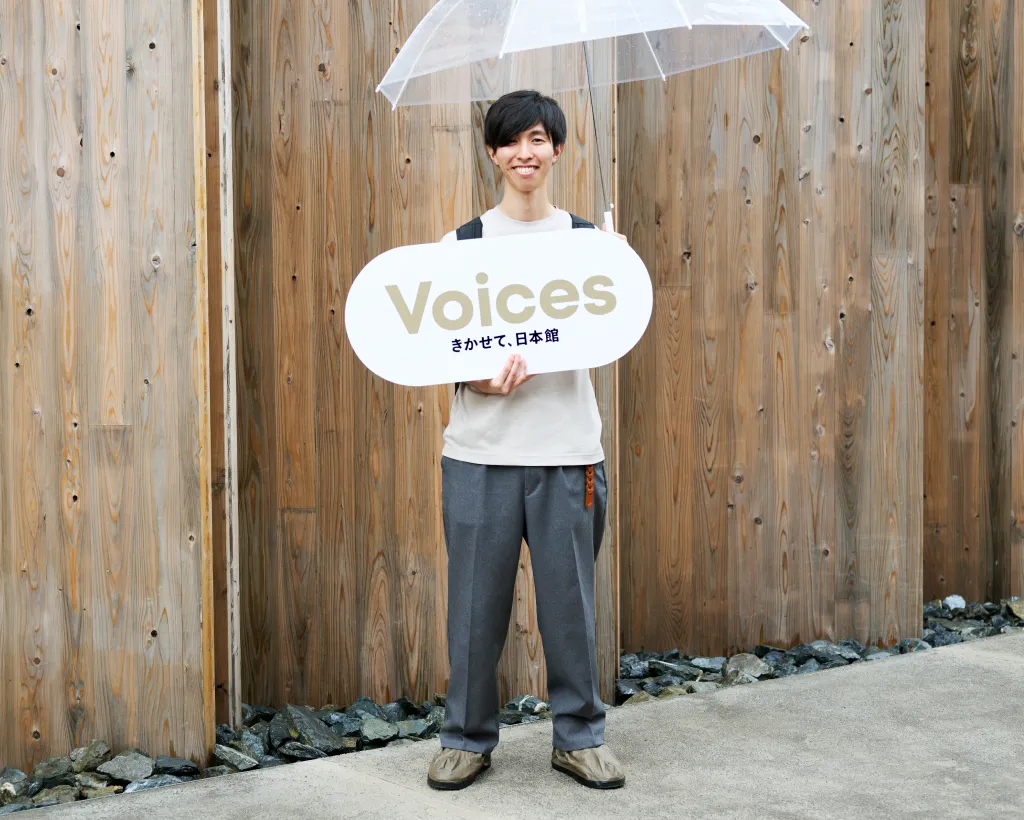
What was your favorite exhibit at the Japan Pavilion?

Naoki
My favorite was the Hello Kitty dressed up as algae. Rather than simply showing algae, they’re presented as a well-known character, which makes you wonder, “What is this?” I was fascinated. My favorite was the Hello Kitty dressed up as the algae Tetrabaena, which looks like a four-leaf clover. The name in Japanese, Shiawasemo, is also pretty cute.
What was something you learned at the pavilion?

Naoki
I always thought the idea to “build robust” was the norm professionally, so the concept of “make soft” at the Gallery of Soft Things surprised me. Soft wakugi nails that bend on their own when they strike something hard, the SLIM lunar lander that absorbs shock by intentionally allowing part of its legs to break when landing on the moon, and Nagare-bashi bridges where part of the bridge girders are swept away when the river rises—they all impressed me. I might be able to use this idea of deliberately building soft in my own work.
Can you think of a cycle in your everyday life?

Naoki
Although somewhat technical, the metal I work with is one example. When I don’t use all of something, I sell the leftover amount back to the seller. They then process it so that it’s easier for us to use. We buy materials, sell the leftovers, and buy materials that have been reshaped. It may sound like a strange relationship, but it means resources are recycled.
Passing on culinary traditions to the next generation / Chako (50, Medical clerical worker)
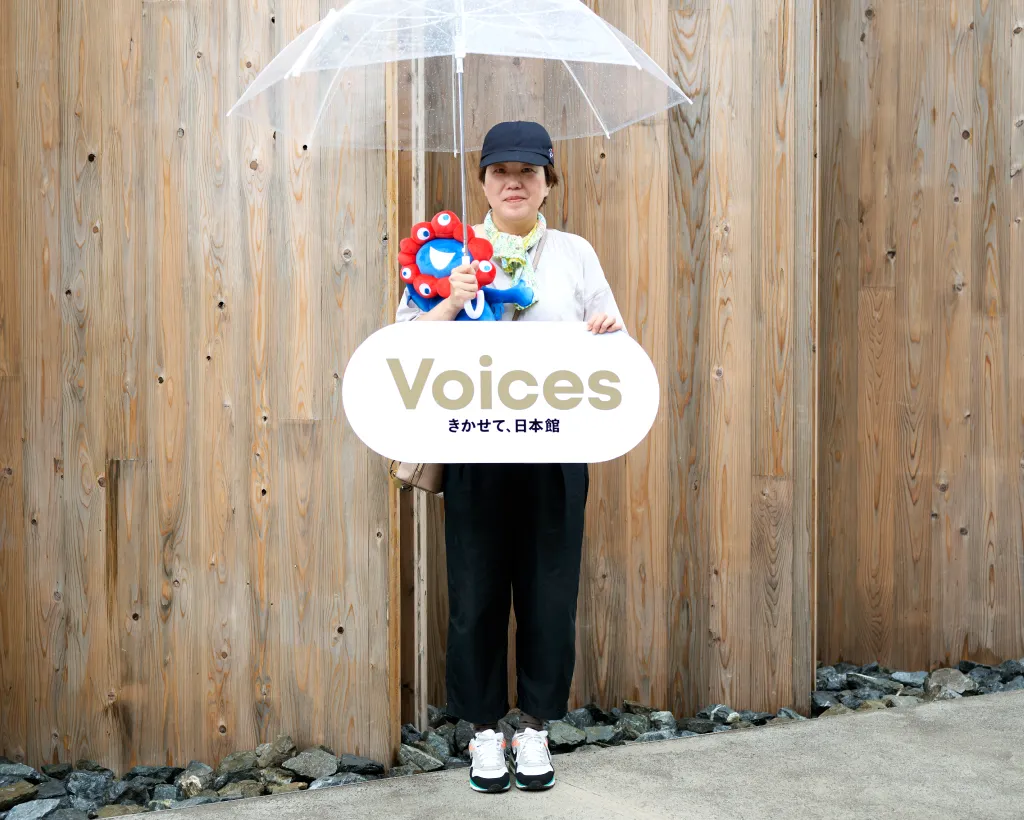
What was your favorite exhibit at the Japan Pavilion?

Chako
Instead of one exhibit, I’d say the entire Japan Pavilion itself was great. Garbage is broken down by microorganisms, energy is generated, it takes shape, and then it returns to its original state. It made me realize how great cycles are.
What was something you learned at the pavilion?

Chako
I learned that there’s no waste in anything. Up until now, I thought that only some things were reborn. When I walked through the Japan Pavilion, I realized that everything’s connected, and that there’s no waste in anything.
Can you think of a cycle in your everyday life?

Chako
Meals based on making koji, such as soy sauce koji or salt koji, is one. I have been doing this for two or three years. I do it partly due to my age. I also learned more about minerals and how to live healthier. That's why I started eating koji. Pickled plums, too. The sour one’s like my mom used to make. The culinary traditions I learned I pass on to my children.
My impression changed completely / Kazunoko (12, 1st year junior high school student)

What was your favorite exhibit at the Japan Pavilion?

Kazunoko
My favorite is the Farm Area. The “Who lives in this aquarium?” exhibit was especially good. It was interesting to see so many tiny algae growing in the aquarium like that.
What was something you learned at the pavilion?

Kazunoko
I was surprised that algae absorb 14 times more carbon dioxide than cedar trees. I had learned in class that trees absorb carbon dioxide, so I thought trees would be the best. It was cool to see algae was better at it than cedar trees. My impression changed completely.
Can you think of a cycle in your everyday life?

Kazunoko
Food is one. We grow it, buy it, cook it, eat it, and grow it again. It’s a cycle because it repeats like that. My favorite food is potatoes, and my favorite dish is curry. I’ve loved both since I was little, so this cycle felt familiar to me.
A relaxing pavilion / Phil (44, Sustainability)
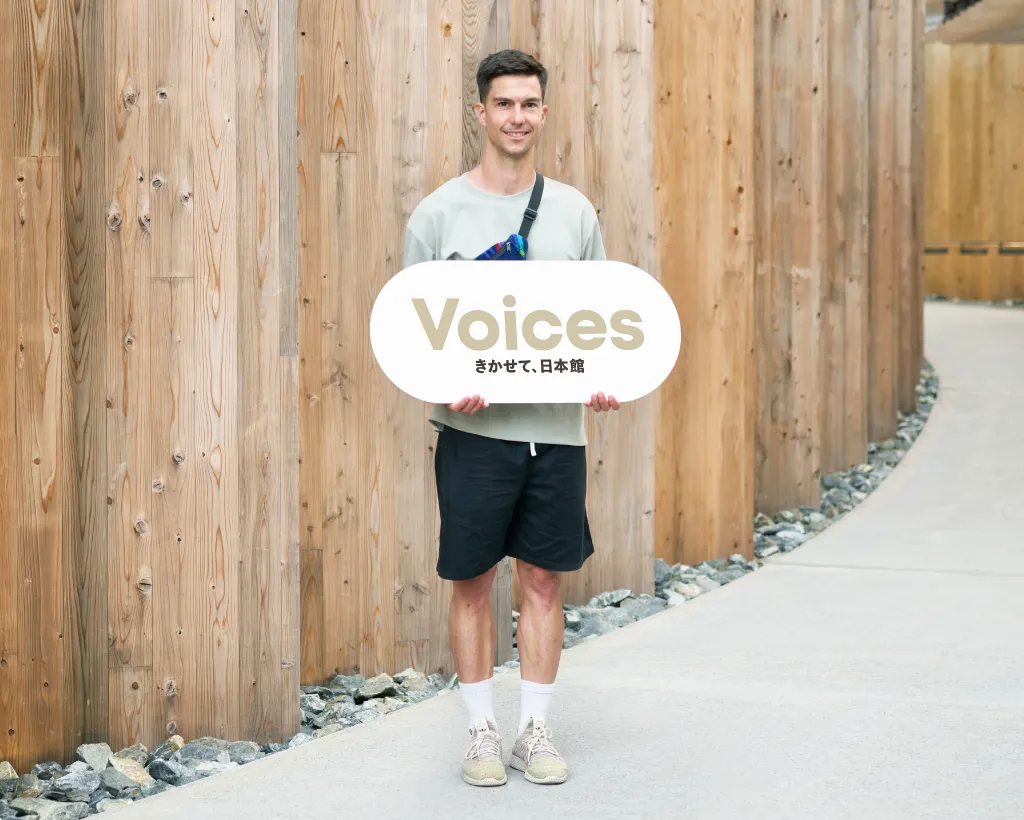
What was your favorite exhibit at the Japan Pavilion?

Phil
The circular design was amazing. I felt a sense of purity when I was at the water basin area at the center of the Japan Pavilion. The open space and the wonderful materials made me feel so relaxed.
What was something you learned at the pavilion?

Phil
I work in energy and biogas. So, I was very interested in the installations. What are the anaerobic digestion and biogasification processes like? And what kind of products can be produced through them? I was surprised that such difficult topics were communicated in such an easy-to-understand manner.
Can you think of a cycle in your everyday life?

Phil
I want to make Quebec, Canada, where I’m from, more circular. We live in a very linear way, so we need to create a circle. We need to talk to our neighbors and better manage and utilize waste instead of seeking out new resources. Cycles are a major challenge in today’s world. I think it's important to think about comforts that have gone too far.
An emotional three hours / Kana (46, Homemaker)
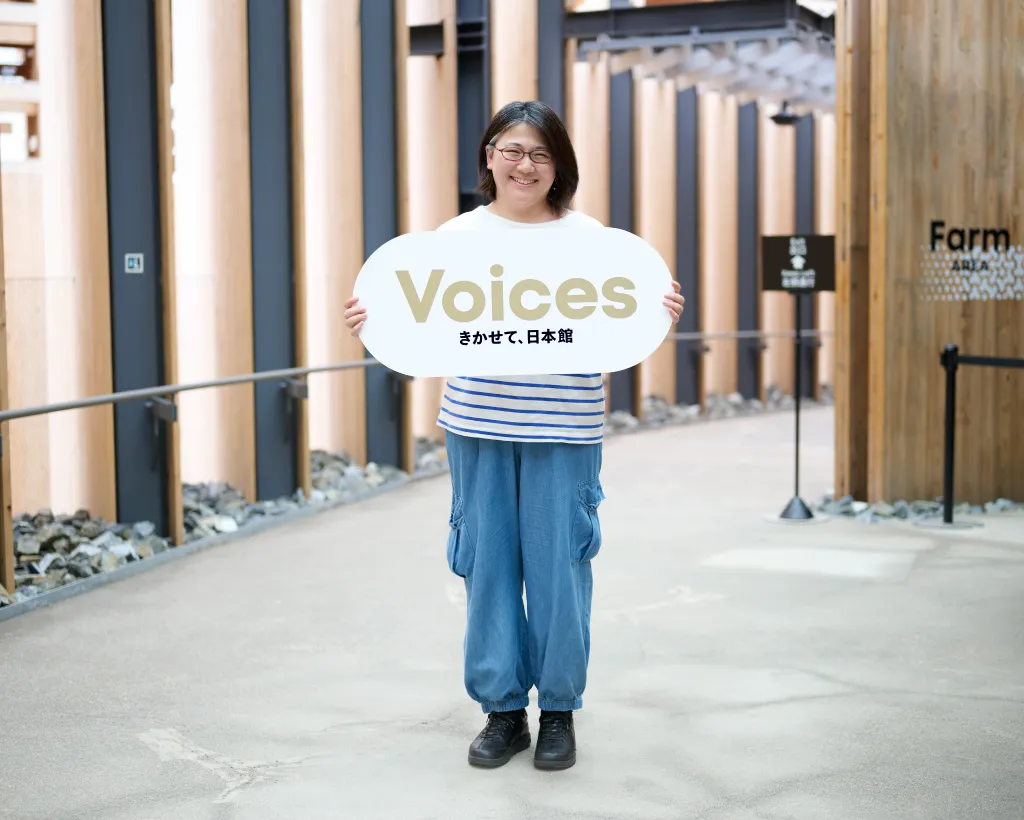
What was your favorite exhibit at the Japan Pavilion?

Kana
My favorite was the biogas plant. My father handles waste oil as part of his work in biomass, so it was very emotional for me. I’m so glad I signed up for the practice tour.
What was something you learned at the pavilion?

Kana
The most surprising thing was plastic being broken down by microorganisms! I had absolutely no idea. I’ve seen things before about decades-old washing machines still sitting at the bottom of the oceans. “They can be broken down?” I was saying to myself, “That’s incredible!” My family who came with me wasn’t quite as moved. It was one discovery or surprise after another—before I knew it, I had been there for three hours.
Can you think of a cycle in your everyday life?

Kana
Joy is one example. When my child was in first grade, sixth graders really helped them out. They taught them what to take out of their school bag each day. “Next, it’s your turn to bring joy to someone else,” I say to my child, “Do what made you happy and help the new first graders.” I think that’s a cycle of sorts.
Let’s Share!
Do you want to be a part of “JUNKAN”?
Share your Japan Pavilion,
and ’circulate’ your thoughts.
